
In the world of gaming, Goat Simulator 3 has taken the industry by storm with its quirky and unconventional gameplay. The game allows players to take control of a goat and wreak havoc in a fully interactive open world. One of the most fascinating aspects of Goat Simulator 3 is the attention to detail in the game’s environment, particularly in the street art that adorns its walls.
Street art has become an integral part of urban landscapes around the world, and Goat Simulator 3 pays homage to this art form by incorporating it into its gameplay. As players traverse the virtual city, they will come across various pieces of street art, ranging from colorful murals to thought-provoking graffiti. These art pieces not only add visual interest to the game, but also serve as hidden collectibles for players to discover and appreciate.
However, over time, the street art in Goat Simulator 3 can become weathered and faded, losing its original vibrancy. That’s where the player comes in – as the goat, it is your mission to restore these art pieces to their former glory. By interacting with the artwork, players can trigger mini-games and challenges that test their creativity and problem-solving skills.
Restoring the street art in Goat Simulator 3 is not just about aesthetics – it also has a deeper meaning. By revitalizing these art pieces, players are symbolically revitalizing the spirit of the city. Street art is often a reflection of the community and its values, and by restoring it, players are actively contributing to the preservation of the urban landscape. This aspect of the game adds an extra layer of depth and meaning to the gameplay, further immersing players into the virtual world.
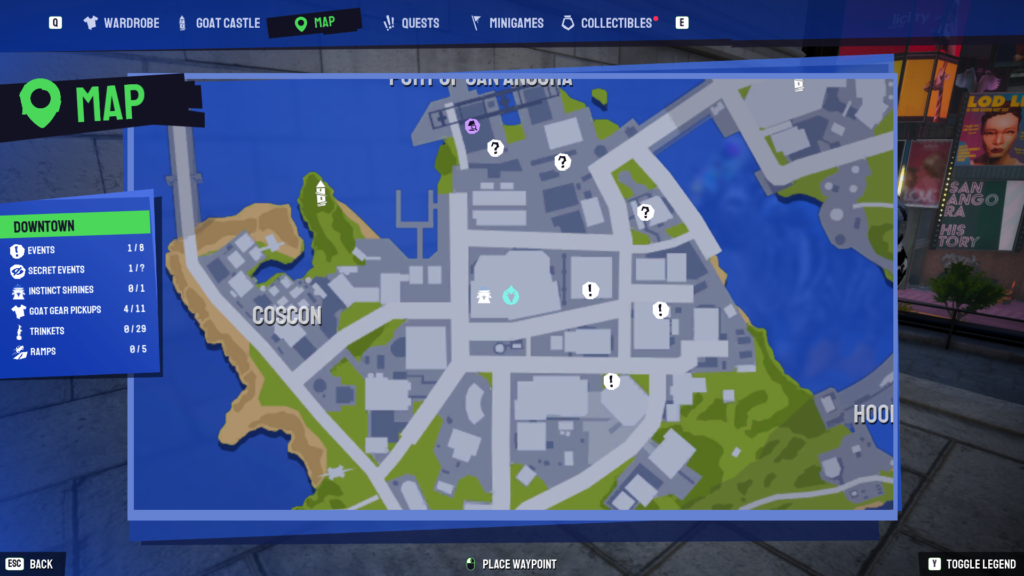
Street art is a dynamic art form that has gained significant recognition in recent years. It is often created by anonymous artists and displayed in public spaces, such as streets, walls, and buildings. While some may dismiss it as mere graffiti, street art holds a great deal of value both culturally and artistically.
One of the key aspects of street art is its ability to challenge traditional art norms. It breaks down the barriers between the artist and the viewer, creating a more accessible and inclusive art experience. Unlike traditional art forms found in galleries, street art is free and open to all. It can be enjoyed by anyone, regardless of their background or knowledge of art.
Street art also serves as a powerful form of self-expression and social commentary. Artists use their creations to highlight important social and political issues, shedding light on topics that are often overlooked or marginalized. By showcasing their work in public spaces, street artists aim to engage and provoke the viewer, spurring conversation and fostering a sense of community.
Furthermore, street art has the ability to transform urban environments. It can rejuvenate neglected areas, making them more vibrant and appealing. Street art adds color and character to otherwise dull and mundane spaces, turning them into vibrant canvases that captivate passersby. In this way, street art has the power to rejuvenate and revitalize communities, breathing new life into overlooked spaces.
Lastly, street art has proven to be a lucrative market. Many street artists have gained international recognition and have their work sought after by collectors, galleries, and museums. What may start as a simple piece on a wall can quickly become a valuable and highly sought-after artwork. This recognition and commercial success have contributed to the legitimization of street art as a valid and significant art form.
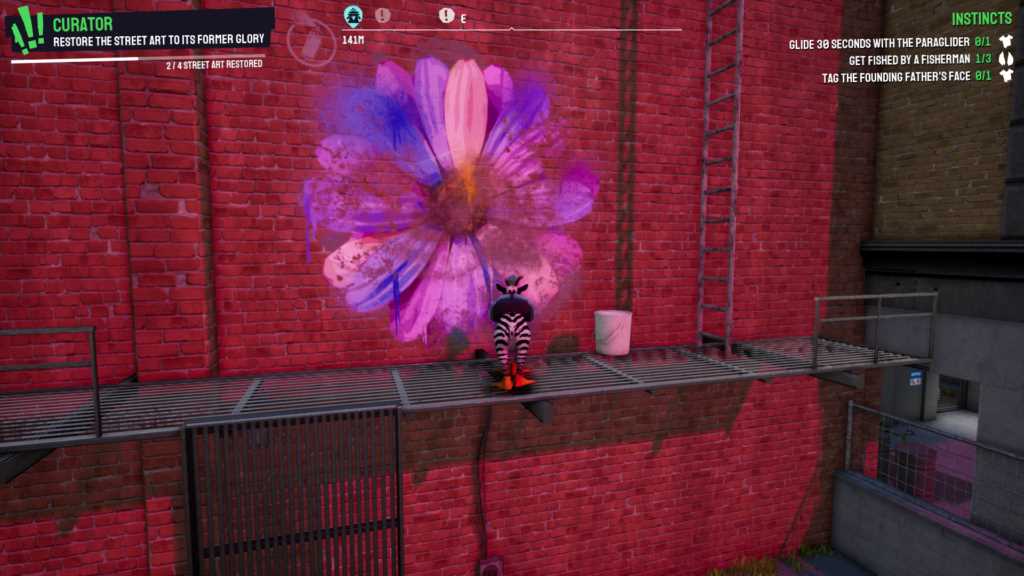
When it comes to restoring street art in Goat Simulator 3, assessing the damage is a crucial step. This involves carefully inspecting the walls, buildings, and other surfaces to determine the extent of the vandalism and the amount of work needed for restoration.
During the assessment process, the street art restoration team examines the graffiti tags, stickers, and other defacements on the affected areas. They determine whether the damage is superficial or has caused structural problems. This evaluation helps to plan and prioritize the restoration efforts.
Identifying the Types of Damage
Various types of damage are commonly found in street art. Tags, which are the signatures or identifiers of graffiti artists, are one of the most prevalent forms of vandalism. Stickers and posters can also be a nuisance, covering up the original artwork and sometimes causing damage upon removal.
Structural damage is another concern. Some defacements may include physical alterations to the surface, such as scratches, chipped paint, or even holes. These alterations may weaken the structure, leading to further degradation if left unaddressed.
Measuring the Extent of the Damage
Quantifying the extent of the damage is important to determine the resources and time frame needed for restoration. The restoration team carefully measures the size and number of tags, stickers, and other defacements. They also evaluate the severity of structural damage and the overall condition of the artwork.
By documenting the damage with photographs and detailed notes, the restoration team can develop a comprehensive plan for restoring the street art. This plan may include cleaning techniques, surface repairs, and repainting or retouching to bring the artwork back to its original state.
Preserving the Original Intention
Assessing the damage with care and attention allows the restoration team to preserve the original intention of the street art. By understanding the artist’s message and style, they can ensure that the restoration efforts remain true to the artwork’s original spirit.
Overall, assessing the damage is a crucial step in the process of restoring street art in Goat Simulator 3. It allows the restoration team to develop an effective plan tailored to each specific case, ensuring that the vibrant and expressive artwork can once again thrive in the virtual world.
Planning the Restoration Process
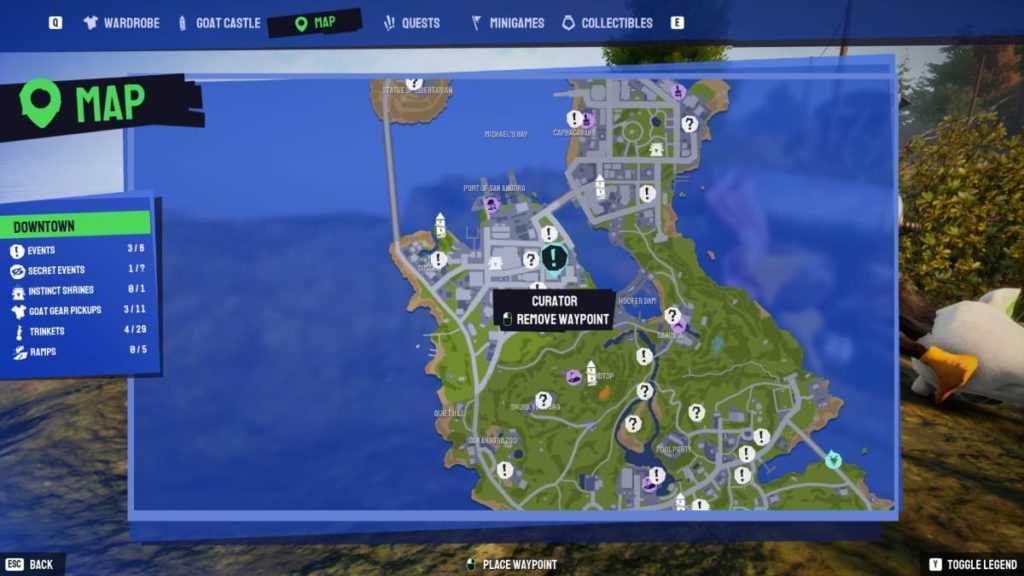
Restoring street art in Goat Simulator 3 requires careful planning and coordination. The process involves identifying the artwork in need of restoration, assessing the extent of the damage, and determining the appropriate techniques and materials for the restoration.
Before starting the restoration, it is important to conduct thorough research on the history and significance of the street art. This helps in understanding the artist’s intentions and style, which should be preserved during the restoration process.
Once the street art is identified, a detailed assessment is conducted to evaluate the extent of damage. This may involve checking for any physical damage, such as fading or peeling paint, as well as any environmental factors that may have contributed to the deterioration.
Based on the assessment, a restoration plan is developed. This plan outlines the step-by-step process to be followed, including the cleaning, repairing, and repainting techniques to be used. The plan also takes into consideration any specific challenges or constraints that may be present, such as working on a busy street or dealing with difficult surfaces.
When planning the restoration process, it is crucial to involve experienced and skilled professionals in the field of street art restoration. These individuals have the expertise to ensure that the restoration is done with utmost care and respect for the original artwork.
In addition, it is important to obtain any necessary permits or permissions required for the restoration work. This may involve contacting local authorities or property owners to ensure that the process is carried out legally and without any complications.
Once the planning phase is complete, the restoration can begin. This typically involves cleaning the artwork to remove any dirt or grime, repairing any damaged areas, and carefully repainting the artwork to match the original colors and style.
Throughout the restoration process, regular inspections and quality checks are conducted to ensure that the work is progressing as planned. Any necessary adjustments or revisions can be made to improve the final result.
By carefully planning the restoration process, the street art in Goat Simulator 3 can be brought back to its original glory, preserving its artistic value and contributing to the vibrant and colorful atmosphere of the game.
Implementing Restoration Techniques
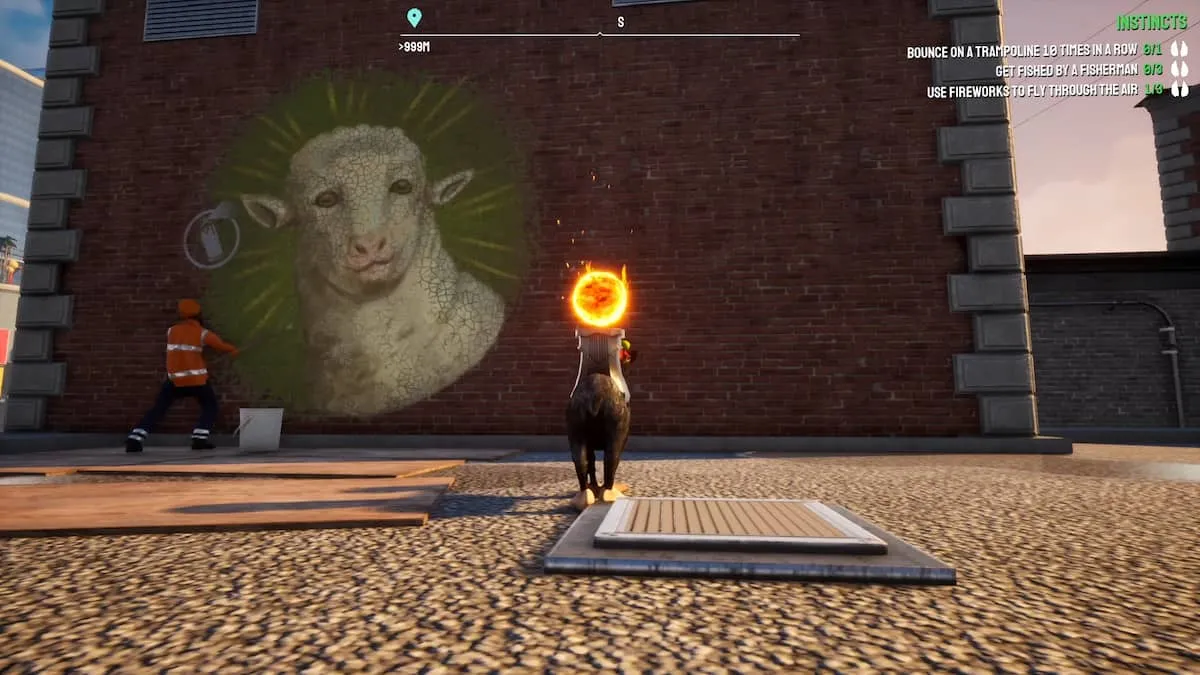
When restoring street art in Goat Simulator 3, it is important to follow a set of techniques to ensure the best possible results. Here are some key techniques to consider:
- Cleaning: Before starting the restoration process, the artwork should be carefully cleaned to remove any dirt, dust, or other contaminants. This can be done using gentle cleaning solutions and techniques that won’t damage the original artwork.
- Documentation: It is crucial to document the artwork before and during the restoration process. This can involve taking photographs, making sketches, and documenting any existing damage or deterioration. This documentation will serve as a reference point and aid in preserving the artwork’s originality.
- Conservation: The restoration process should prioritize conservation techniques to ensure the longevity of the artwork. This can involve using reversible materials and methods, such as using reversible adhesives for any repair work, to minimize damage to the original artwork.
- Inpainting: In some cases, parts of the artwork may be missing or damaged beyond repair. In these situations, careful inpainting can be done to seamlessly integrate the restoration work with the original artwork.
- Protective Coating: Once the restoration is complete, applying a protective coating can help preserve the artwork over time. This coating can protect the artwork from environmental factors such as weathering, UV radiation, and vandalism.
By implementing these restoration techniques, the street art in Goat Simulator 3 can be successfully restored and preserved for future enjoyment.
Maintaining Restored Artwork
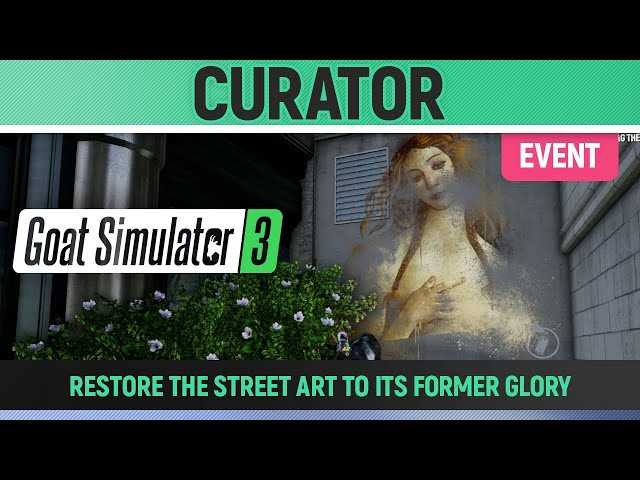
Once the street art in Goat Simulator 3 has been successfully restored, it is important to implement a maintenance plan to ensure its longevity and continued visual impact. Here are some key steps to consider:
Regular Cleaning: Dust and pollutants can accumulate on the surface of the artwork over time, diminishing its vibrancy. Regular cleaning using gentle methods such as wiping with a soft, damp cloth can help maintain the artwork’s appearance.
Protective Coating: Applying a protective coating, such as a clear sealant or varnish, can provide an extra layer of protection against weather elements and vandalism. This coating should be selected carefully to ensure compatibility with the specific type of street art materials used in the restoration.
Inspections: Conducting routine inspections of the restored artwork can help identify any signs of damage or deterioration early on. This allows for prompt repairs and maintenance to prevent further damage.
Engage the Community: Involving the community in the maintenance process can help create a sense of ownership and pride, encouraging individuals to respect and protect the artwork. This can be achieved through organized clean-up events, educational programs, and art-related workshops.
Documentation: Keeping detailed records of the restoration process, including photographs and written descriptions, can be valuable for future reference. This documentation can assist in monitoring the condition of the artwork over time and help guide future maintenance efforts.
Collaboration with Artists: Establishing a relationship with the original artists or local street art organizations can provide valuable insights and guidance on maintaining the artwork. This collaboration can also aid in coordinating future restorations or touch-ups if necessary.
By implementing these maintenance measures, the restored street art in Goat Simulator 3 can continue to enhance the urban landscape and captivate the community for years to come.
Showcasing Restored Masterpieces
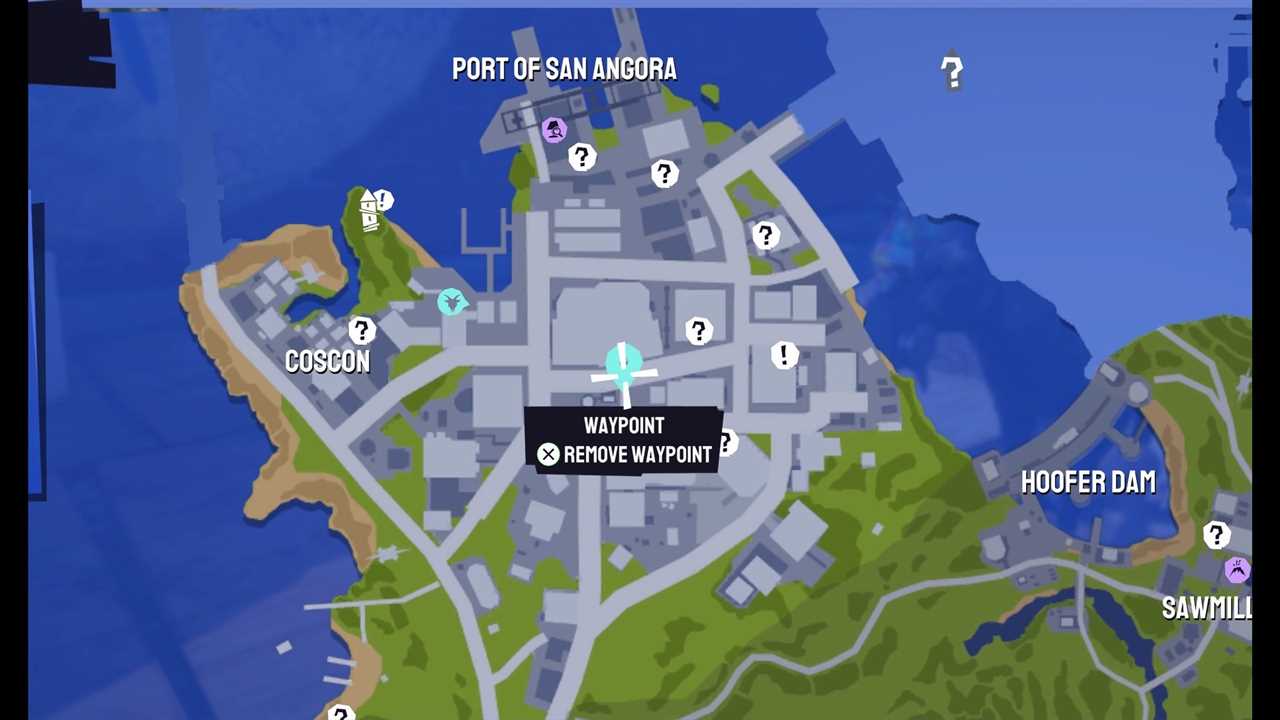
After months of hard work and dedication, the team at Goat Simulator 3 is proud to present the restored masterpieces of street art in the city. These vibrant and captivating creations have been brought back to life, allowing locals and tourists alike to appreciate the true beauty of urban art.
Every stroke of paint and every splash of color has been carefully restored to its former glory, showcasing the immense talent and creativity of the original artists. These masterpieces tell stories, evoke emotions, and challenge societal norms in ways that only street art can.
Walking through the streets of the city, visitors can now witness the power and impact of these restored artworks. From large-scale murals that tower over buildings to smaller, hidden gems tucked away in alleyways, the diversity and range of the restored masterpieces are truly awe-inspiring.
As you explore the city, keep an eye out for these restored masterpieces. Some may be hidden in plain sight, while others may require a bit more searching. But once you discover them, you will be rewarded with a visual feast for the senses.
The restored street art has also sparked a renewed sense of pride and appreciation among the local community. Residents now take pride in their city’s vibrant art scene, and tourists flock from all over to witness these masterpieces firsthand.
So come and immerse yourself in the world of restored street art in Goat Simulator 3. Let the beauty and creativity of these masterpieces captivate your imagination and inspire you to see the world in a whole new light.
Collaborative Restoration Projects
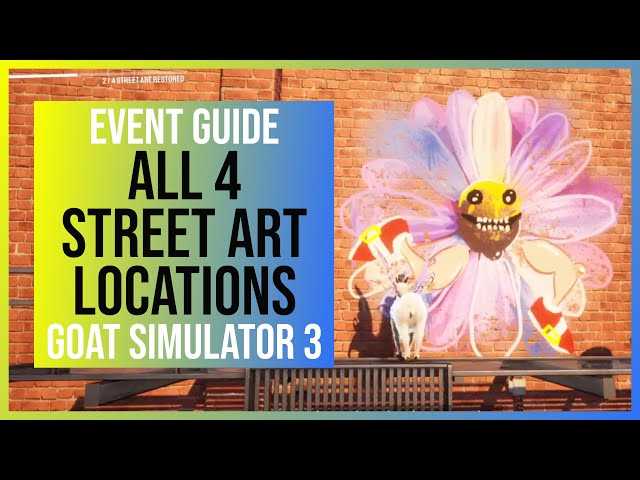
Restoring street art in Goat Simulator 3 is not a task that can be undertaken by a single person alone. It requires the efforts and collaboration of a devoted community of street art enthusiasts, artists, and volunteers. Collaborative restoration projects are key to reviving the vibrant and diverse street art scene in the game.
These restoration projects bring together individuals from various backgrounds who share a common love and passion for street art. Artists, both experienced and emerging, join forces to bring life back to the faded murals and graffiti that once adorned the virtual streets of Goat Simulator 3.
Why Collaborate?
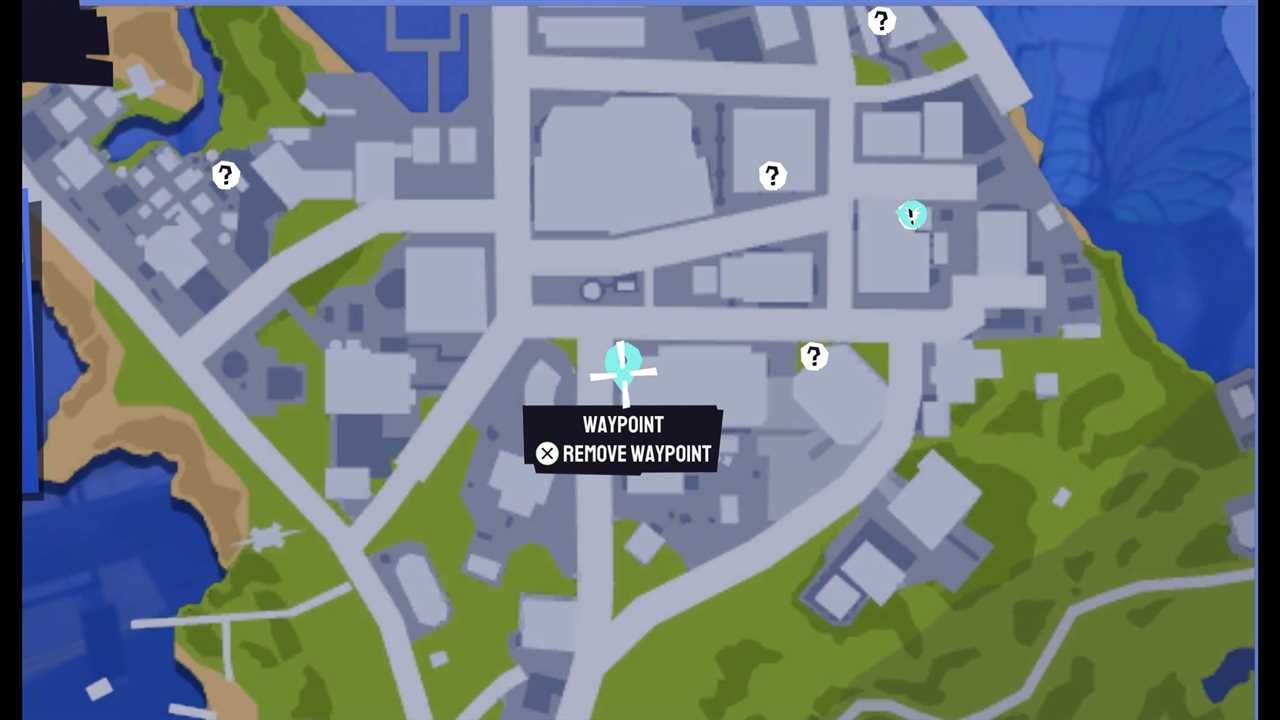
Collaboration is essential in restoration projects because it allows for a diverse range of artistic styles and perspectives. By working together, artists can bring their unique skills and expertise to the table, resulting in a more vibrant and captivating street art experience.
Moreover, collaborative restoration projects foster a sense of community and shared purpose. They provide an opportunity for artists to connect, learn from one another, and build lasting friendships. Through collaboration, artists can inspire and be inspired, creating a positive and supportive environment for the restoration of street art in Goat Simulator 3.
The Process of Collaboration
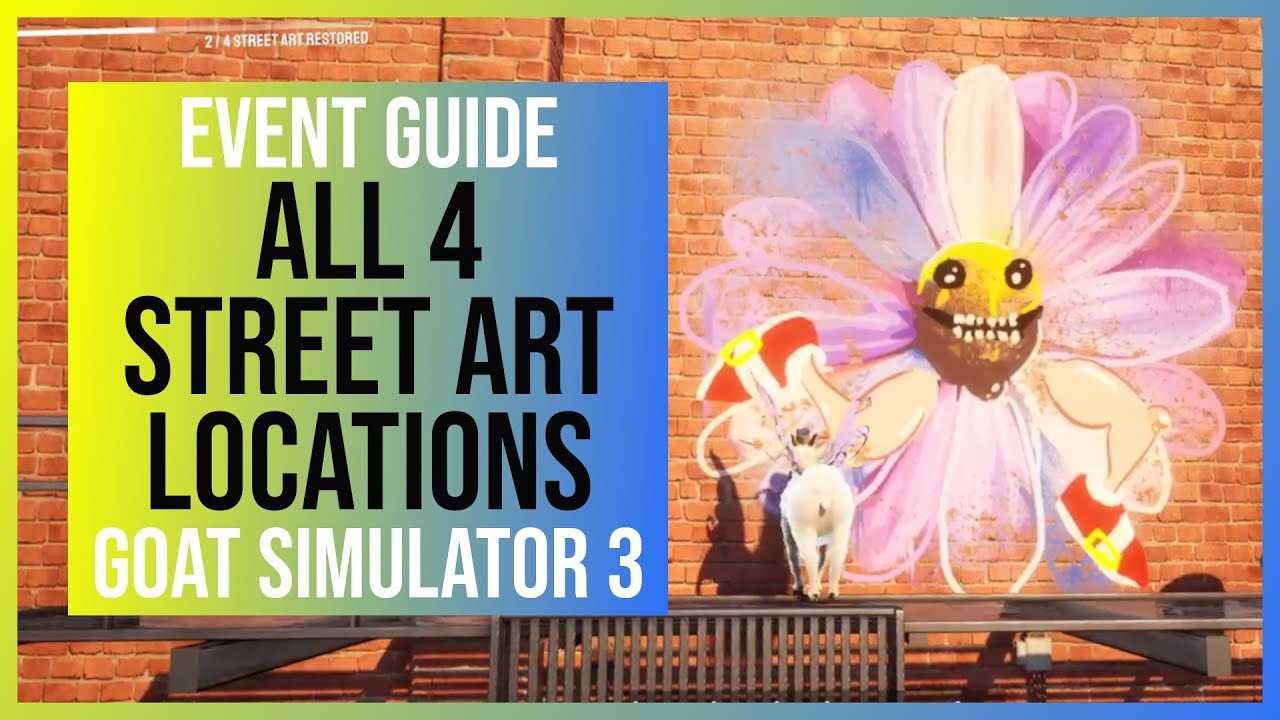
The process of collaboration in street art restoration projects typically involves several stages:
- Planning: Artists and volunteers come together to identify the areas in the game that are in need of restoration. They discuss and decide on the themes, styles, and techniques to be used in the restoration process.
- Execution: Once the planning is complete, the artists begin the actual restoration work. They use their skills and creativity to breathe new life into the faded artworks, using a variety of mediums such as spray paint, stencil art, and digital tools.
- Documentation: Throughout the restoration process, artists document their work through photographs and videos, capturing the transformation from start to finish. This documentation serves as a record of the collaborative effort and can be shared with the wider community.
- Celebration: Once the restoration is complete, the community comes together to celebrate the revitalized street art scene in Goat Simulator 3. Art exhibitions, community events, and virtual tours are organized to showcase the restored artworks and highlight the collaborative efforts that made it all possible.
Collaborative restoration projects not only restore the visual appeal of Goat Simulator 3 but also contribute to the overall immersive experience of the game. They bring together a diverse community, foster creativity, and showcase the power of collaboration in art restoration.

I am a mural enthusiast and a fervent admirer of street art. Rather than creating murals myself, I am passionate about collecting them. My love for street art knows no bounds. I am dedicated to curating and cherishing these artworks that grace the streets. My collection stands as a testament to my profound appreciation for this form of artistic expression.
read about me



